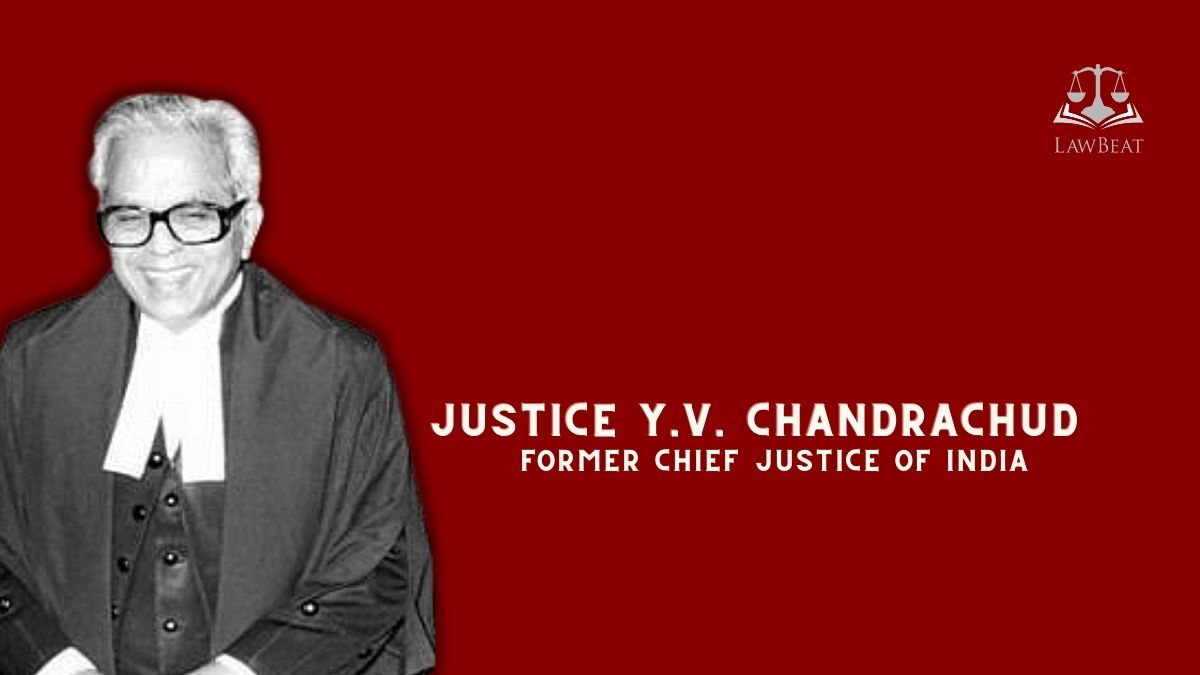‘THE IRON HANDS’: Remembering Justice Y. V. Chandrachud and his unwillingness to let anything slip past him

First appointed Judge to the Supreme Court of India and the longest-serving Chief Justice in India's history, Justice Yeshwant Vishnu Chandrachud, a true jurist, was known to be a liberal judge and for his path breaking judgments.
This year, India celebrated 101st birth anniversary of Justice Y. V. Chandrachud on July 12, 2021. [Watch the live streamed celebrations streamed on Lawbeat's Youtube channel]
Justice Y. V. Chandrachud was also known from the name “Iron hands” which was given to him considering his unwilling attitude to let anything slip past him.
He was part of many historical judgments including the Kesavananda Bharti.
Justice Y.V. Chandrachud was born in Poona on 12.07.1920. He graduated with History and Economics in 1940 from the Elphinstone College, Bombay and obtained his law degree in 1942 from ILS Law College, Pune. He enrolled as an advocate in High Court of Bombay in 1943. He was a part time professor of law in Government Law College, Bombay, from 1949 to 1952. He was appointed Judge, High Court Bombay, on 19.03.1961 and Judge, Supreme Court, on 28-08-1972. He was appointed the Chief Justice of India on 22.02.1978 and remained the Chief Justice for next 7 years and 4 months.
Justice Y.V. Chandrachud was appointed Chief Justice of India during the term of the Janata government, under Prime Minister Morarji Desai. When Indira Gandhi's Congress government came back to power a few years later, Justice Y.V. Chandrachud became a strong opponent of the government, and was known for staunchly defending the independence of the judiciary.
Justice Dhananjaya Yeshwant Chandrachud who is currently acting as a Supreme Court Judge is his son. Remembering his father at various occasions he has often mentioned as to ‘how his father had a special place for criminal law in his heart and how the former CJI’s verdicts served a reformative role rather than only serve the “penological purpose.’
One can have a glimpse of Justice Y.V’s contribution in strengthening the foundations of Indian Judiciary through the judgments he delivered. During his tenure as Chief Justice of India, he oversaw some landmark cases, such as the Shah Bano case and the Kissa Kursi Ka case, where Sanjay Gandhi was remanded to 30 days in judicial custody by the Supreme Court – a ruling that undid the perception that the judiciary had capitulated to political influence.
Some of his landmark judgments are discussed below in short -
The Minerva Mills case: In Minerva Mills Ltd. v. Union of India (1980) he had laid down how a balance between fundamental rights and directive principles had to be achieved. In this case the court unanimously ruled that the power of the Parliament of India to amend the Constitution is limited by the Constitution. The parliament cannot emasculate the fundamental rights of individuals, including the right to liberty and equality.
The Shah Bano Case- In Mohd. Ahmed Khan v. Shah Bano Begum (1985) he had ruled that divorced Muslim women were entitled to claim maintenance from husbands under the Civil Procedure Code overriding the Muslim Personal Law.
This case caused the Rajiv Gandhi government, with its absolute majority, to pass the Muslim Women (Protection of Rights on Divorce) Act, 1986 which diluted the judgment of the Supreme Court.
In Gurbaksh Singh Sibbia v. State of Punjab (1980) he had laid down the law of anticipatory bail. He had held that anticipatory bail must be left to judges who have the experience to take a wise decision.
In this judgement he highlighted that it was the court’s task to figure out how to strike a balance between the two and determine the scope of the Section 438 under the Code of Criminal Procedure, 1973. Justice Chandrachud has also pointed out the term “reason to believe” means the apprehension must be founded upon reasonable grounds and not just a mere ‘belief’ or ‘fear’.
Justice Chandrachud’s this ruling clearly showed his empathy for criminal law.
In Olga Tellis v. Bombay Municipal Corporation (1985) he had extended Article 21 (Right to Life) of the Constitution to slum dwellers, ruling that they had the right to a roof over their heads. This case is widely quoted as exemplifying the use of civil and political rights to advance social rights.
The Habeas Corpus Case- While looking at the famous judgments one cannot avoid mentioning the case of A.D.M. Jalbalpur v. Shivakant Shukla [(1976) came before the Supreme Court after proclamation of national Emergency via Presidential Order. In this case the detenues under the restrictive Maintenance of Internal Security Act had argued that the Right to Life and Liberty (article 21 in the Indian constitution) could not be suspended even during periods of national emergency.
Justice Chandrachud along with Justices A.N. Ray, P.N. Bhagwati, and M.H. Beg decided that the right to life itself could be suspended during an emergency. The only dissenting opinion was from Justice H. R. Khanna in the case.
However, the same was later revisited by Supreme Court in 2017 to include the right to privacy as a fundamental right.
Justice Y. V. Chandrachud’s legacy as a judge is an epitaph which tells the story of evolving times and interpretation of the Constitution. Through his persistent reformative approach he made the apex judicial process more responsive and accountable to people.
Watch the memorial lecture commemorating Justice YV Chandrachud's 101st birth anniversary here.
